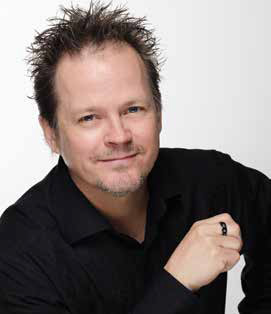- Meet Timothy Thornton, Technical Director, Media Department, The Woodlands First Baptist Church, Texas
AV Technology: How is AV/IT convergence playing out in your facility?
Timothy Thornton: I have always embraced all types of technology and AV, but traditionally each area has been kept separate. In more recent years, however, the lines are becoming blurred because everything is connected through IT. For example, you used to have audio separate from lighting, which was separate from video. But now, we are seeing a complete marriage of technology—both on the AV and IT sides—because they are all interconnected and dependent on each other.
Previously, at The Woodlands First Baptist Church, we had a hodgepodge of AV gear from various manufacturers, and we had so many communications issues. We were fortunate enough to complete a large upgrade project, with much of the AV install consisting of Blackmagic Design gear, so standardizing gear-wise was a huge help. But we also took it a step further and upgraded our IT and brought the AV into that system because, in the end, the AV depends on the IT and vice versa. The two are completely married now, and that unification has created a more seamless and efficient overall system and workflow.
What AV/IT problems have you solved recently?
Timothy Thornton: Previously, we had a plethora of different AV gear and it was conflicting with IT, conflicting with different parts of our campus; we had conflicts with people plugging in various devices, both personal and professional, and we were running into some very complicated scenarios and had things failing left and right. [To fix this] we decided on a complete system-wide rehash of the AV and network.
On the AV side, we went with Blackmagic Design because of the products’ affordability, feature set and expandability. We had to stay in budget, but didn’t want to be limited in our capabilities or have our equipment become obsolete, and Blackmagic Design solved that for us.
On the network side, we needed a system that would better monitor and notify us when things were happening, good or bad. Traditionally, this would have been very expensive because we would have needed dedicated IT personnel for each area, but in creating a unified system, everything can be managed from one place. When it comes to personal devices, people can still plug in and connect, but it’s on a separate network, so there are no interferences with AV or the main IT network.
What types of new tech or products have you recently learned more about?
Timothy Thornton: In preparation for the upgrade, we created an advisory team of industry professionals for every aspect that we were going to need. They were vital to advising on products, flagging pitfalls to watch out for and suggesting moving control and monitoring to the cloud.
We were especially intrigued about this advice, as it made so much sense for our unified system, and now our senior staff can poke their noses in and monitor it at any time. We researched and embraced everything the advisory team had to say, and it paid off because now we have a seamless and interconnected system.
What AV/IT have you recently purchased?
Timothy Thornton: Going into the upgrade, we wanted products that had built-in expandability. Previously, we were limited by AV hardware devices that would require completely replacing them every time they needed updating, or that couldn’t handle a physical campus expansion.
Now, with Blackmagic Design, our AV is future-proofed thanks to the ability to work in SD, HD and Ultra HD, with the ATEM 2 M/E Production Studio 4K; the multitude of inputs and outputs on the Videohub routers, which let us grow our workflow how we see fit, as well as the fact that Blackmagic Design provides so many free firmware upgrades, which keep our technology up to date.
On the IT side, we now have a “pop the top open” system, so if we need to upgrade to the latest wireless Internet, we easily can. Or, if we need more space, we can pop in a new motherboard. We needed a scalable solution, and now that we have one, we aren’t wasting time and money.
Where are tech manufacturers getting it wrong or missing opportunities?
Timothy Thornton: In today’s world, products have to be upgradable, and so many manufacturers are missing this opportunity.
Because of the rapid evolution of technology, even if a product is made well and has a relatively long lifecycle, that alone doesn’t cut it. If a change needs to be made, often times a product becomes obsolete. If products are built to be future-proof and upgradable with firmware updates, then they don’t become obsolete.
Blackmagic Design is a perfect example because they constantly create firmware with features I not only need, but also with features that I didn’t realize I needed. Like many organizations, we have a budget and strict guidelines to follow, and we can’t just purchase a piece of equipment whenever we want, so remote upgrades, firmware and expandability are what we need.
What is the biggest obstacle to collaboration? What are your collaboration strategies?
Timothy Thornton: Our biggest obstacle was taking advice from multiple sources and from that, creating a budget-friendly solution that worked specifically for our unique situation. There is so much information out there and so many ways to do something.
We were lucky enough to have an advisory team, and each person had their own opinion and way of doing things. We took great counsel and ultimately had to fit the best ideas into our budget. Our strategy was to work closely with the advisory team, have them double-check our work, and we chose items that could be upgraded, so the advisors would say, “okay, you are safe, within budget and you still have the opportunity for expansions.”
If you would like to participate in the Meet Your Manager section, email the AV Technology editors via mdouaihy@nbmedia.com.










